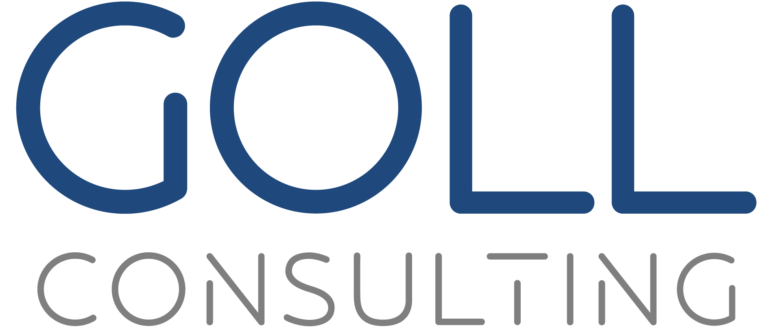SUCCESSION PLANNING
Successful succession in family businesses
The handover of a family business to the next generation is an important and often challenging milestone for companies and families.
NACHFOLGE PLANUNG
Nachfolge in Familienunternehmen erfolgreich gestalten
Die Übergabe eines Familienunternehmen an die nächste Generation ist ein wichtiger und oft herausfordernder Meilenstein für Unternehmen und Familien.
SUCCESSION PLANNING
- Clarify the initial situation and create the foundations
- Development of the concrete successor solution
- Handover and takeover
- Accompanying further development
THIS IS HOW WE PROCEED
In this complex task, the interests, expectations, goals and abilities of the people involved (family, shareholders, management), the company’s situation and strategic requirements must be taken into account.
We select the building blocks in the 4 phases together with you depending on your goals and needs.
OUR SOLUTION
Our premises and services
- The overarching goal is the sustainable success of the company.
- This requires clear responsibilities and a targeted succession solution.
- We create and design a successful overall process with you.
- We adapt all building blocks to individual circumstances.
- We moderate the process from A to Z or individual components such as the family or shareholder dialogue, the development of the family charter, the strategy check and any conflicts that arise.
- If necessary, we coach the transferors, the successors, the shareholders, the management and also the family.
- We advise on content in all phases. We involve tax and legal advisors as well as other experts.
- We guarantee absolute confidentiality.
THIS IS WHAT OUR CUSTOMERS SAY
“Our goal was to hand the company over to the next generation in several steps. First of all, we had to clarify some significant conflicts among the shareholders and adapt the shareholders' agreement. This would hardly have been possible without the support of Goll Consulting. We were then able to implement the succession in a well-structured and moderated process. I also don’t want to hide the fact that the personal coaching helped me significantly to let go of my role as managing partner after 30 years and to shape my new role as “just” an advisory board member in a positive way.”
Managing partner of a traditional company with 700 employees
“In order to decide to succeed my successful father in the company, it was important to me to gain clarity about the future roles of all family members and to define my own scope for action. We developed this clarity together in a multi-stage family dialogue, which was professionally prepared and sensitively moderated by Goll Consulting. I found the participatory strategy process that we went through with the managers particularly enriching. During this process, we grew closely together as a new management team and successfully managed the generational change with a strong sense of togetherness."
Daughter of the 51% shareholder of a hidden champion
“We stick together as a family. Our company is successful in its third generation and we largely agree with our children when it comes to strategy and culture. Nevertheless, the development of the successor solution was highly emotional and fraught with stumbling blocks. But we laid down the premises for the successor in good time. The target image of who should take on what role in the company and the steps towards enabling this target image were called into question by personal life plans. In addition, the corona crisis brought significant market changes. We had to react flexibly. It was good to have an experienced consultant on hand who fully identified with the task and who coached and moderated us as an entrepreneurial family. This process was associated with great personal and entrepreneurial development.”
Entrepreneur couple in a family business with 250 employees
FROM
PRACTICE
The managing director and partner wants to pass on his medium-sized family business to his three children. One child works in the company, one is just joining the company after external experience and one child is still studying. The father would like to step down from operational management in four years.
Essential steps in the succession process
1. Clarify the initial situation and create the foundations
Clarify the following aspects with the father
- What premises do I have for succession? 5What is fair for the company and the family?
- How do I hand over the management, how do I regulate the shareholder level?
- What role do I want to take on after the handover?
- How do I make the transition into my new phase of life?
- What mental pattern do I have after the handover (letting go, being a mentor, being on an advisory board, having a say in strategic decisions, getting involved operationally)?
- In which steps would I like to approach the process?
Clarification of the goals, expectations and interests of the children and family shareholders
Individual interviews were conducted to create personal clarity for everyone involved. The subsequent “Family Dialogue” workshop made the goal of succession, the expectations and interests of the family members transparent and deepened mutual understanding. The family developed a positive attitude towards the process. It was decided to develop a family charter to establish governance for the family and business.
Development of a family charter
In an intensive process, the entrepreneurial family clarified the family’s goals and values as well as the different roles as shareholders and operational family members. On this basis, rules for inheritance and the use of profits were also developed.
2. Develop successor solution
Target image for future management structure
A target image for the future leadership and organizational structure was developed and decided.
Strategy check
At the same time, a strategy process was designed with management and successors. Strategy-relevant questions were answered together in order to create the content framework for the succession process:
- What are the success factors today and tomorrow?
- What has already been decided strategically? What strategy do we continue to pursue?
- On which strategy-relevant topics do we need to develop new things?
- What is our vision? What are our most important strategic goals?
- Which strategic areas of action do we work on and in what form?
Individual preparation and qualification of successors
The successors received professional coaching to reflect on their behavior and prepare for key situations. The father also provided support from an agreed mentorship role.
3. Design the handover</strong >
Installation of the new leadership constellation
After the successors had successfully taken over their functions, it was time for the father to officially hand over the baton and say goodbye to his operational role. For this purpose, a celebratory and appreciative staff conference was held in which the company’s history was reflected and the father’s entrepreneurial achievements were honored. In addition, the start of the next phase of the company was made tangible in the dialogic conference.
4. Follow-up and fine-tuning
The process was reflected on and readjusted in regular strategy reviews and meetings – including with external advisory boards.
Conclusion:
Three years after the baton was handed over, it is clear that the handover process, which is complex in terms of content and emotions, has been sustainably successful. The development of the family charter and the dialogic clarification and knowledge processes in all phases are crucial for success.
The shareholder situation requires the consent of all three shareholders to a succession solution. A shareholder in the family business has a suitable successor who has already proven himself as managing director in a subsidiary. The children of the other shareholders pursue careers outside the company. The shareholders have different views on the strategy, which have so far been subject to conflict. The main challenge was initially to clarify the strategy and succession concept among the shareholders.
Essential steps in the succession process
1. Record the initial situation and goals of the key people
The interests, expectations and goals of the shareholders were recorded and scope was defined. The rules for generational change have been established.
Processing form
- Individual interviews with people, joint discussion of the initial situation and goals within the shareholder group
Result
- Transparency of perspectives and agreement on the overarching corporate goal
- Determination of different interests and scope
- Installation of a neutral advisory board to resolve the shareholder conflict and the succession process
2. Clarify shareholder level
A target image was developed for the company and for the shareholder level. In addition, a new shareholders’ agreement was passed and basic premises for successor solutions were drawn up.
Processing form
Dialogue workshop with shareholders and advisory board, further advice on financial and tax topics
Result
- Agreement between the shareholders under the premise of the company’s success
- Change of shareholder roles and the shareholder agreement
- Basic basis for succession planning
3. Identify strategic challenges, future topics define
Three central questions were addressed:
- What strategic challenges lie ahead in the next 3 years?
- What significance do these have in the context of generational change?
- How do we process them and with what distribution of roles?
Processing form
Strategy workshop for shareholders with operational responsibility with the participation of selected managers and the advisory board, strategy work depending on the field of action
Result
Strategy for the next few years, definition of the main fields of action and forms of processing
Commissioning the next generation to develop and present certain strategy-relevant topics with managers and, if necessary, consultants.
4. Define structural and process organization, corporate culture
Requirements profiles for key positions and the management team were drawn up and the structural and process organization was defined.
Processing form
Check with the advisor and the transferring shareholders
Meeting shareholders and successors, workshops with management team and successors
Result
Future management, including an external managing director, have a clear idea of the future organization and corporate culture.
5. Draw up and implement an implementation plan for succession
A concrete implementation plan – with the participation of the management team – was developed for the handover of the baton. This plan contains a communication concept and a stringent timeline.
Processing form
Leadership work, position changes, customer handovers, baton handover ritual, project management
Result
The new management and expanded leadership team have created and are implementing an actionable implementation plan.
Conclusion:
The succession creates the opportunity to reorganize shareholder issues and thus give the company a sustainable decision-making structure. A neutral advisory board and stringent moderation are helpful. The handover itself is used for more intensive strategic management of the company with more involvement of managers. The next generation is driving forward important future topics (e.g. digital roadmap), and the start of the new phase is being enthusiastically supported by the employees.






